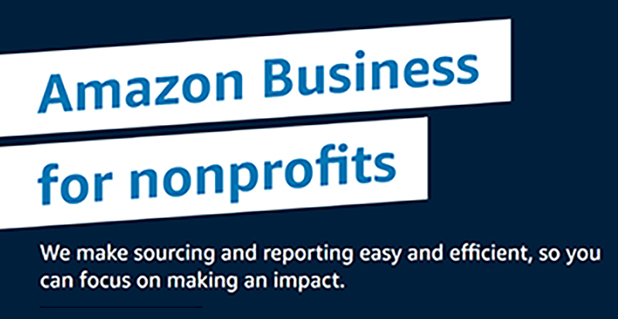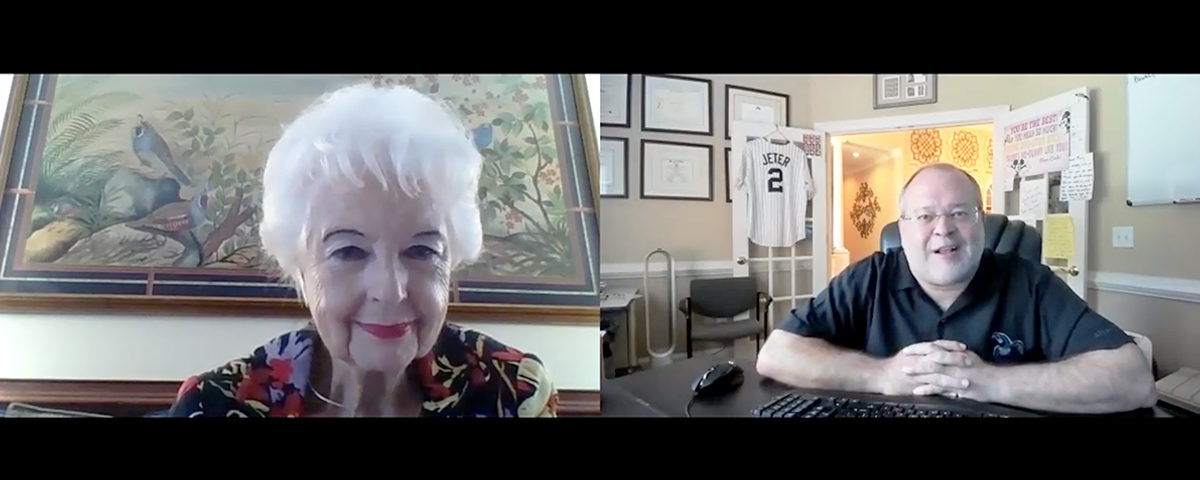
Measuring Nonprofit Employees’ Passion & Performance – Brooke Foley
December 11, 2020
Amazon Business for Nonprofits Supports Charities
December 12, 2020Zooming Major Gifts – Jim Eskin

Zooming Major Gifts – Jim Eskin is a veteran fundraiser’s take on the new world of virtual one-on-one asks. Here’s what Jim has to share:
I’ve long insisted that superior listening skills were close to, if not at the top of, the list of essential attributes of a great fundraiser. This might surprise some people, who assume the most important skills needs are a silver tongue and powers of persuasion. But in my 25 years as both a fundraising practitioner and trainer, I’ve learned it takes much more than that.
In successful solicitations, the donor speaks 75% of the time, and the fundraiser just 25%. This places a premium on the listening skills demonstrated during the majority of the time and the communication skills demonstrated in the brief time that’s left.
We often hear the term “active listening,” but what does it really mean, and how is it implemented during an ask?
Active listening is not easy. It means the donor can see and sense that the fundraiser is genuinely interested in learning, and, most importantly, probing for understanding of every word spoken.
An active listener must also be an active communicator. Notice I didn’t say an active speaker. The psychologist Dr. Albert Mehrabian discovered the 7–38–55 Rule of Personal Communication, which he defines as demonstrating that only 7% of a message is communicated through spoken word, 38% through tone of voice, and 55% through body language.
If this wasn’t challenging enough, fundraisers are now finding that active listening and communicating has to be done in virtual as opposed to face-to-face meetings. This has turned the fundraising profession upside down, since face-to-face meetings were long considered the gold standard in interactions with donors, especially when soliciting major gifts.
The common denominator in effective listening and communicating is making the donor feel like they’re the most important person in the world to our non-profits. We know how to do that face-to-face, but how do we accomplish the same thing screen-to-screen?
While computers can do so many important things for us, they can’t replicate the emotional connection we get from being face-to-face with another human.
However, because videoconference technology has been around for several decades, experienced practitioners and educators can give us some helpful do’s and don’ts to make our virtual communications more effective.
Zooming Major Gifts – Jim Eskin
Here are what I consider 10 of the best tips to follow:
1. Establish eye contact. Don’t look at the other party’s eyes on the screen, but at the eye of your device’s camera, usually located at the top of your screen.
2. Never take audio quality for granted. You don’t want to keep on repeating “What?” or “Could you say that again?” Experiment with microphones, earbuds and headsets. You may find out it’s best for you to use your computer’s built-in microphone and speakers. If possible, be sure you know in advance how the donor is going to look and sound. You don’t want your first virtual communication with them to be an important ask.
3. Less is more. Plan on a virtual meeting that is about two-thirds of the length you would have in person. Virtual meetings are more exhausting. Like in-person solicitations, there should be no more than twice the number of solicitors to donors. The traditional pairing of the CEO or Director of Development along with a board member who enjoys a personal relationship with the donor still works well.
4. Dress for success. That doesn’t necessarily mean wearing a suit, but “office casual” (or working from home) also doesn’t mean you can dress more casually than you would for an in-person solicitation. A reasonable rule of thumb is to aim for attire that is one level more formal than the donor’s.
5. Your face should fill at least one-third of the screen and be positioned squarely in the middle. You can test how you’ll look to the viewer by turning on your computer’s camera in “selfie” mode and adjusting the height and angle of your screen. You may want to place your computer on a shelf or a stack of books so the camera is at your eye-level. Also, be sure whatever is in the background is not distracting. A solid, neutral-colored wall or screen behind you is best.
6. Limit hand gestures. I love using my hands to reinforce main points, so I’ve had to control that habit on camera. Exaggerated hand motions distract the viewer and can dilute the importance of your message.
7. Lights, camera, action! Whether it’s natural or artificial, your lighting is not something you should take for granted. Control it so that your facial expressions come across clearly and you look your best to the viewer. You don’t want your face to look washed-out or hidden in shadows.
8. Position props strategically in the background. Think about which photos, books and mementos you want on display that will reinforce your personal brand. Limit them to a select but important few, so they’ll enhance and reinforce your message, not distract from or contradict it.
9. Don’t worry about taking notes. Most videoconferencing technology will automatically record sessions for you. I always had mixed feelings about taking notes. Originally, I wanted to capture a flawless record of the donor’s comments, but when I realized note-taking can compromise eye contact with the donor, I switched to writing an accurate log immediately after ending the meeting. Whether you record the video or write a summary afterward, you should always follow up by sending the donor a summary of the discussion and next steps. My favorite method is to send a short handwritten note. It’s the kind of personal touch that will make you stand out.
10. Be creative. Handshakes might be history, but how about a computer “fist bump” to celebrate moments of agreement and decisions to move forward?
Experience is the best teacher. So, with each virtual meeting — especially virtual solicitations — you are learning what works for you and what doesn’t.
Fundraising remains the ultimate exercise in continuous improvement. With every ask, we should learn something, whether the response we receive is yes, no or maybe.
Jim Eskin’s leadership roles span more than 30 years in fundraising, public affairs and communications in the San Antonio area. During his career, he established records for gifts from individuals at three South Texas institutions of higher learning. He enjoys training non-profit boards on fundraising best practices and overcoming the fear of asking for gifts. His consulting practice Eskin Fundraising Training builds on the success of his fundraising workshops and webinars and provides the training, coaching and support services that non-profits need to compete for and secure private gifts. He has authored more than 100 guest columns that have appeared in daily newspapers and business journals across the country, and publishes Stratagems, a monthly e-newsletter exploring timely issues and trends in philanthropy. Sign up here for a free subscription. He is author of 10 Simple Fundraising Lessons, which can be purchased here.
Zooming Major Gifts – Jim Eskin was first posted at INSIDE CHARITY.
For more articles like Zooming Major Gifts – Jim Eskin VISIT HERE
